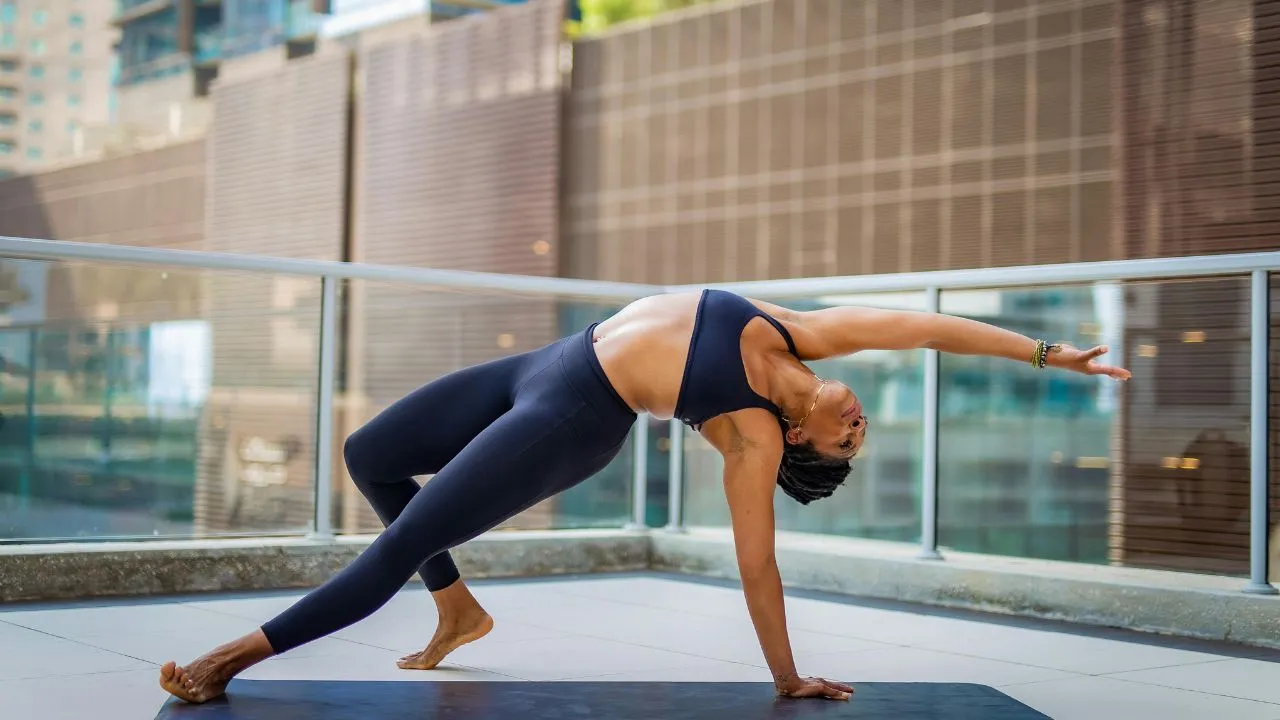Introduction
Hot Yoga has taken the fitness world by storm with its detoxifying heat, challenging poses, and high-energy environment. For many, it provides a potent full-body workout that improves endurance, flexibility, and focus. However, despite the advantages, many practitioners report feeling drained afterward.
In this comprehensive guide we will cover almost all your doubts related hot yoga.
What is Hot Yoga?
Hot Yoga is a type of yoga that is done in a heated space that is usually between 90 and 105 degrees Fahrenheit (32 and 40 degrees Celsius) and has a lot of humidity. The objective is always the same: to raise body temperature, promote perspiration, and strengthen the bond between movement and breath.
Why You Feel Drained After Hot Yoga
It’s very normal to feel drained after Hot Yoga, and it’s not a sign of weakness. The heat itself causes the body to work harder. Your body works harder to stay cool as your internal temperature rises, changing blood flow, raising heart rate, and producing sweat. In addition to using more energy and burning more calories, this process can deplete vital minerals..
How Often Should You Do Hot Yoga Without Feeling Burned Out
The frequency of your sessions has a significant impact on how your body responds to the level of intensity. When they begin to see results but also feel drained, many people inquire as to how frequently they should perform hot yoga. Your level of fitness, way of life, and best techniques all influence the answer.
Two to three sessions a week are ideal for novices. Your body has enough time to adjust and heal as a result. If they maintain hydration, get enough sleep, and eat a healthy diet, intermediate or advanced practitioners may attend up to four or five sessions per week. Doing hot yoga daily without proper care can lead to burnout, over-training, or even hormonal imbalances. You should slow down and balance your schedule if you experience persistent fatigue or irritability.
Can I Do Hot Yoga While Pregnant
The short answer is that consult your doctor first. Consult your healthcare provider and a qualified prenatal yoga instructor to make sure you’re practicing safely if you did hot yoga frequently prior to becoming pregnant and feel comfortable continuing. Hormonal changes during pregnancy result in natural changes in blood volume, body temperature, and joint flexibility. The dangers of dehydration and overheating can increase when external heat is added. The majority of medical professionals advise against doing hot yoga while pregnant, particularly during the first trimester when the fetus is at its most vulnerable. Prenatal yoga at room temperature is a safer option that still allows for movement.
Recovery Tips to Prevent Post-Yoga Burnout
Recovery is essential to avoid feeling drained after class. Before, during, and after your session, start by drinking water. Within 30 to 60 minutes after class, eat a healthy snack, such as a protein and green smoothie, Greek yogurt, or a banana with almond butter. Sleep is also very important. Make sure you’re getting at least 7 to 8 hours of good sleep if your practice is intense so that your body can recover and reset.
Finally, pay attention to your body. Resting is acceptable if you’re worn out. Yoga is not about overdoing it; it’s about finding balance.
About the Author
Muhammad Hammad Abbas is a Yoga Blogger and WordPress Expert. He writes simple and engaging content for beginners interested in mindfulness, yoga, and personal growth. On his blog Mindful Eden, he shares wellness articles designed to educate and inspire people around the world.

